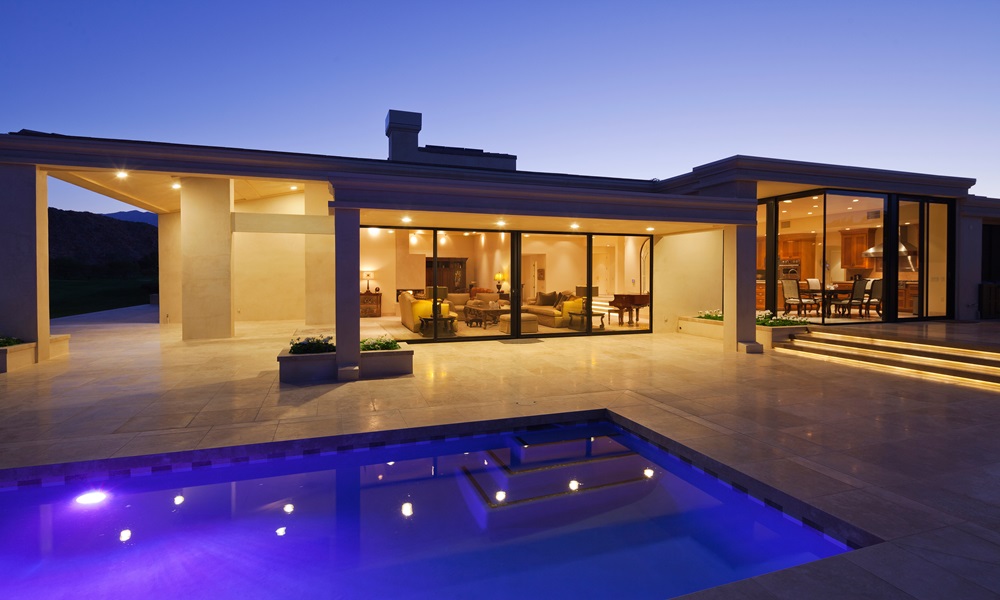Time and time again, the custom home integration industry hears about how popular lighting systems are becoming. Integrators are often urged to learn more about lighting and offer those systems to help make their customers’ homes really pop.
In fact, lighting is so important to the channel that HTSA Executive Director Jon Robbins mentioned lighting just a few minutes into his opening remarks at the buying group’s Fall Conference last week.
Proficiency in selling lighting fixtures is a key growth factor
Robbins presented revealing data on HTSA dealer members and lighting systems, grouping integrators into five tiers based on their lighting installs. Dealers that made up the best-performing lighting tier were up nearly 34% overall and the next-lowest tier were up just over 24%. Meanwhile, members in the worst lighting tier were actually down 6.5%.
Overall, lighting makes up only 6% of overall HTSA member purchases.
“Members excelling in [lighting] fixture sales are driving growth across all categories,” Robbins said. “Those who have found success in selling lighting fixtures are seeing increased overall purchasers with all non-lighting vendor partners.”
In addition, the entire custom installation market appears to be benefitting from the growth of the lighting category, according to data Robbins presented. The top two tiers of HTSA members selling lighting fixtures report an average of 42% purchase growth in 4K TV, control and audio categories.
“The data shows it clearly: Lighting category adoption is benefitting everybody,” Robbins asserted, adding that the growth of the lighting category isn’t negatively impacting non-lighting vendors.
While lighting is important to growth and an integrator’s success, it can also help integrators become involved earlier in the project, which is an elusive goal for many in the professional smart home industry.
Lighting helps integrators become part of the design process
For new projects, smart home integrators are often brought in too late to really make an impact and design systems that blend in with a home’s architecture and design. Often, integrators are left to come in after everything is essentially built, essentially turning the project into a difficult retrofit and causing further delays.
A panel discussion featuring Bryan Perrault, who recently took over ownership of Barrett’s Technology Solutions and Lelch AV Founder Alex Lelchuk, explored how integrators engage with clients today and the need to become a trusted design partner on par with builders, architects and interior designers.
A major part of this shift involves leading with lighting solutions. Lighting decisions need to be made early in the design process, so integrators can get involved with the client, architect, and designer much sooner. This positions the integrator as a collaborative design partner, rather than just a technology provider.
“Because we’re involved much sooner on the lighting side, there’s more collaboration between all of us,” Lelch said. “It’s not just the AV conversation or our system designer or engineer. It’s our system designer, AV engineer, our lighting designer and our shade designer that are sort of matching [the architect and builder’s] team.”
By focusing on lighting first and positioning lighting as a design item rather than a technology item, integrators are able to carve out dedicated budgets for those design-focused solutions before the overall audio/video budgets are allocated. This helps ensure the integrator has a seat at the table early on.
“Lighting design … decisions are typically made much earlier, so we can carve out those additional budgets much earlier in the project life cycle,” Perrault said.
Lelch and Perrault emphasized creating immersive experiences for clients, such as in dedicated lighting and audio labs. This helps build trust, credibility, and demonstrates the integrator’s expertise. Clients are increasingly interested in the aesthetic integration of technology, further reinforcing the integrator’s role as a design partner.
The speakers contrasted this approach to the past, where the focus was on impressing clients with the latest audio/video technologies. Now, the goal is to educate clients on the possibilities, understand their needs, and collaboratively develop the right solutions while establishing the integrator as a trusted advisor.
Overall, the shift towards a design-focused, collaborative approach with lighting at the forefront has allowed integrators to get involved earlier in projects, secure dedicated budgets, and position themselves as essential members of the design team rather than just technology vendors.
Don’t hesitate on lighting
One thing became clear at HTSA’s Fall Conference: dealers who aren’t proficient in lighting need to rethink their strategy.
Home integrators who have been hesitant to dive into the lighting market may want to reconsider, according to Patrick Laidlaw, director of business development at AiSPIRE. Laidlaw argues that lighting represents a significant growth opportunity that integrators can’t afford to miss.
“If you don’t do it, two years from now, you’re gonna be bidding against your competitor who does offer it, and he’s got a bigger offering,” Laidlaw said. He notes that while lighting integration may seem daunting, it’s not actually a new concept – there are already integrators who have been doing it successfully for 15 years.
Laidlaw also draws a parallel to the early days of automated shades, when many integrators were reluctant to get involved.
“When you look at a company like Lutron, which everybody recognizes, Lutron’s shading business is almost bigger than their control business and they predict the lighting business will be bigger than their shading,” he said.







